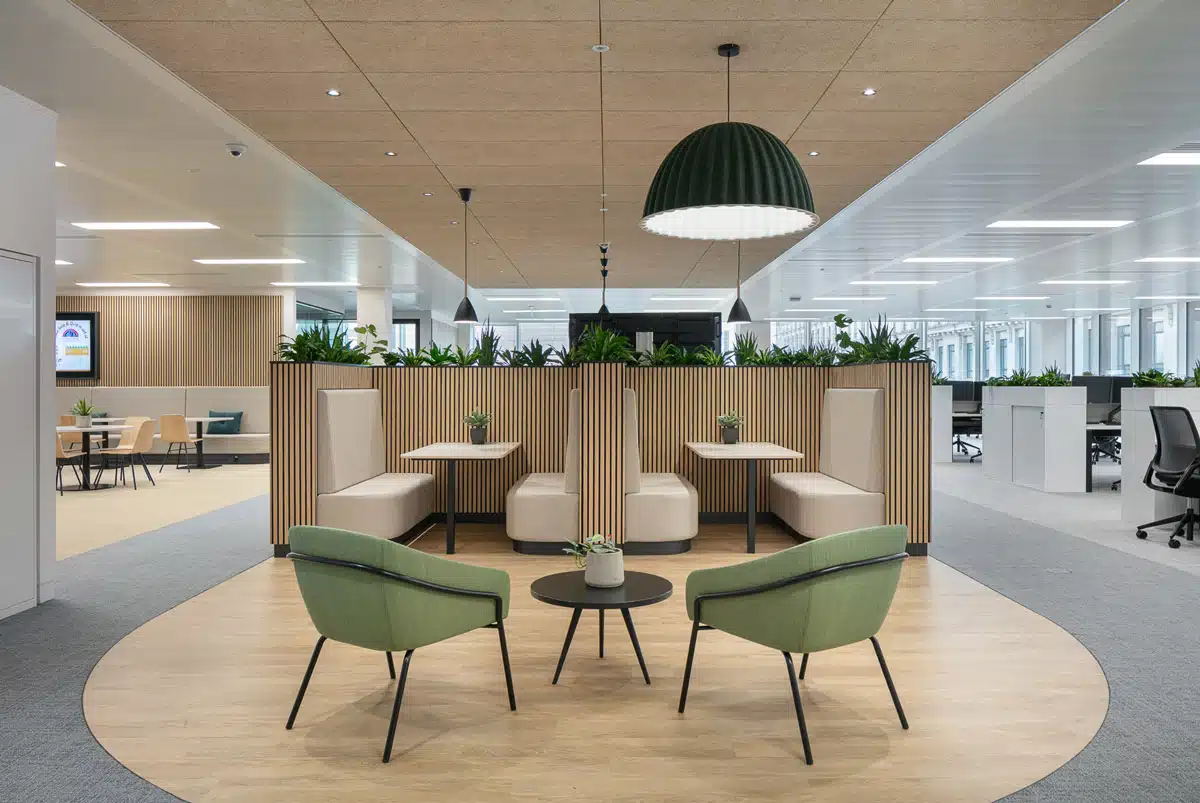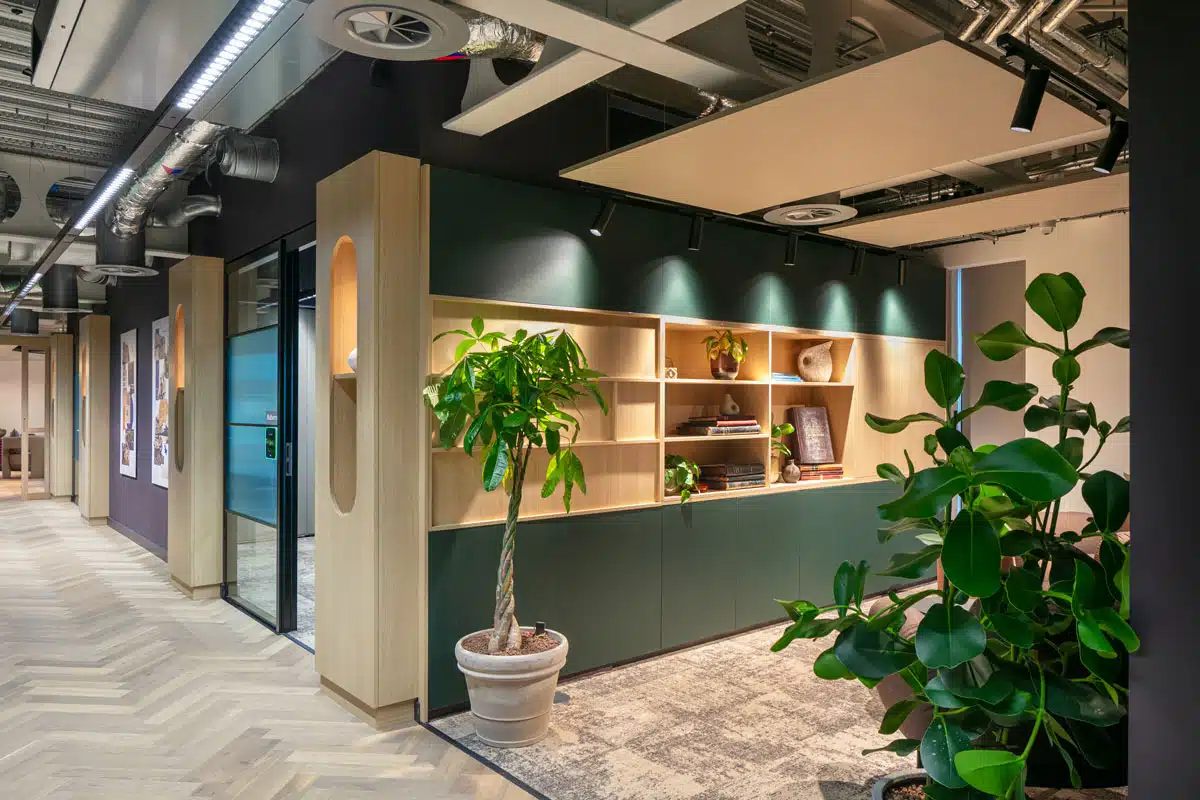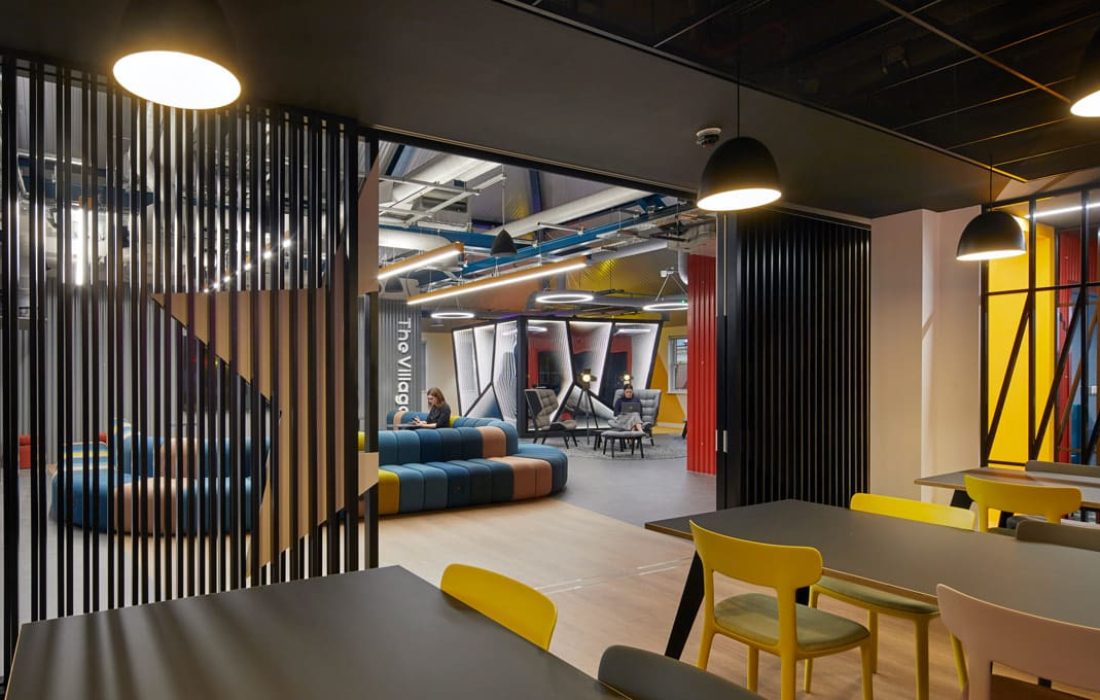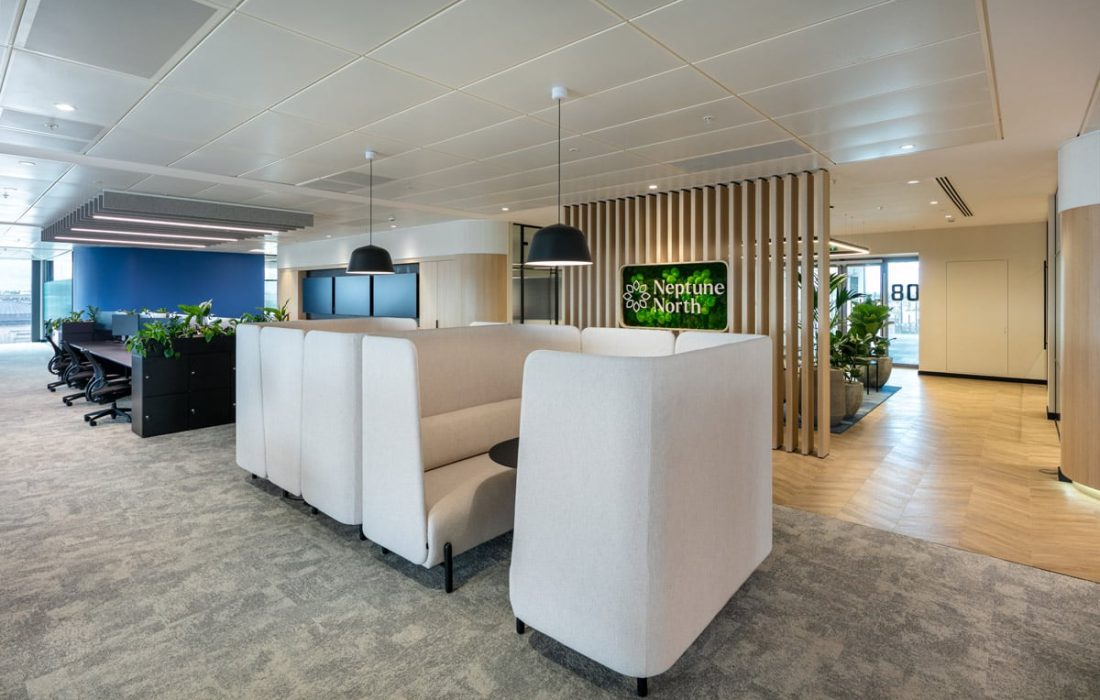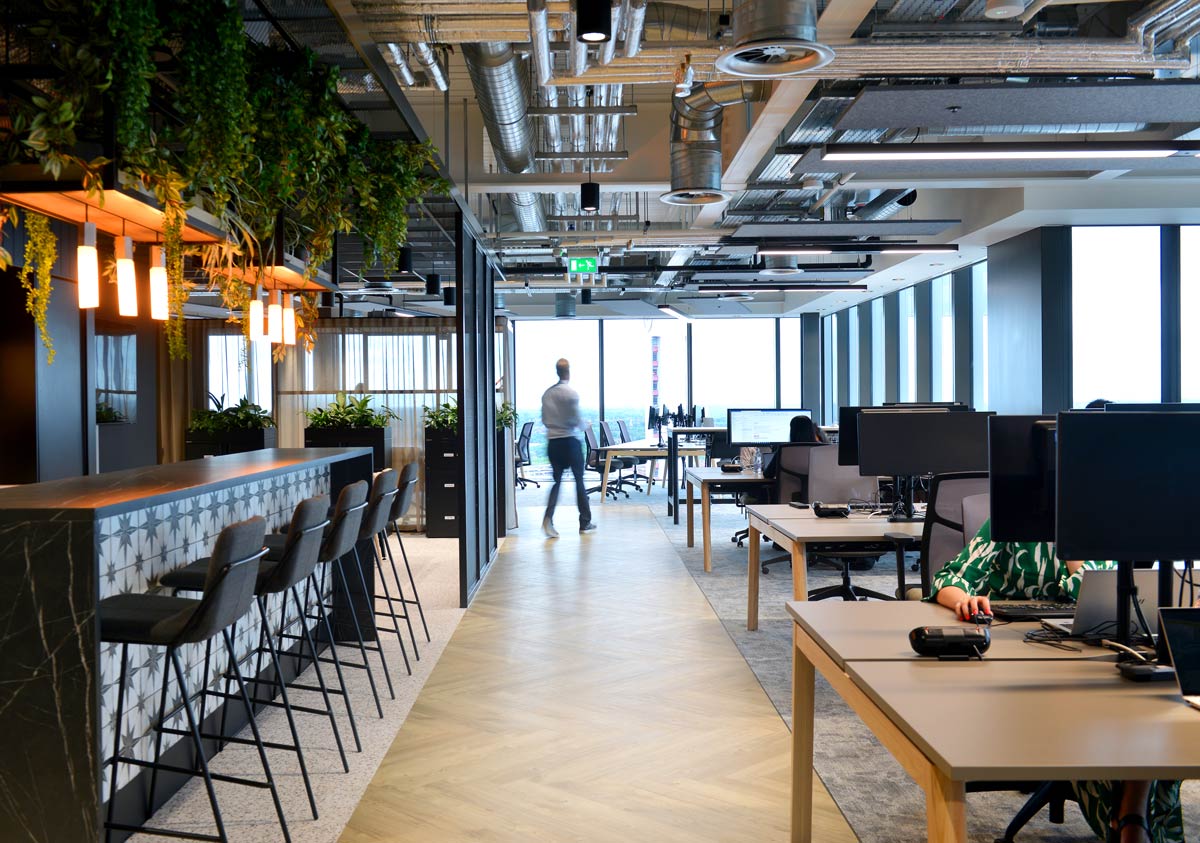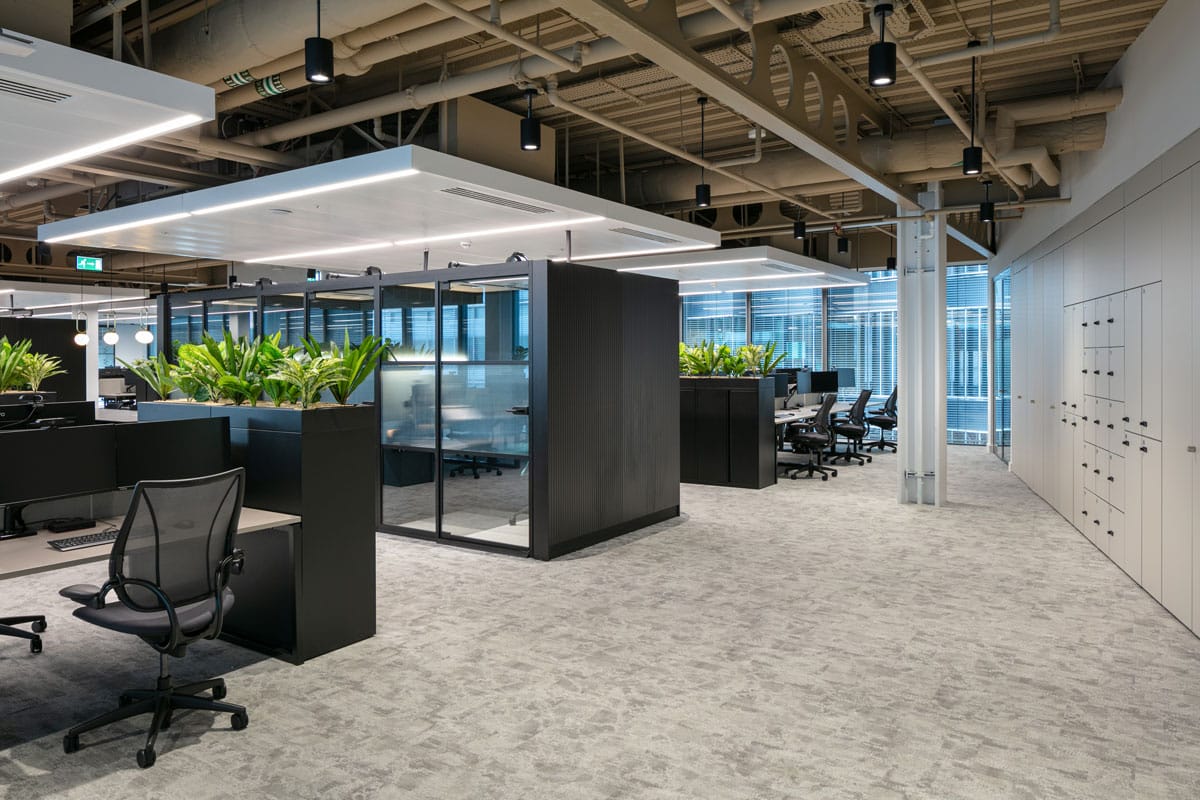In a world of rapid change, the role of the workplace has shifted. Offices are no longer just functional environments. They are spaces where people seek connection, creativity, comfort, and purpose. To meet these expectations, the most forward-thinking companies are now designing workplaces that feel good to be in — and do good for people and planet alike.
At ADT Workplace, we believe that good design is not just about looks. It’s about experience, sustainability, and wellbeing.
What Does “Feel Good” Office Design Mean?
To achieve this, designers focus on:
- Natural materials: Think timber, wool, cork, and stone. These offer texture, warmth, and a tactile quality that’s often missing in plastic-heavy environments.
- Lighting and acoustics: Soft lighting and sound-absorbing materials help reduce stress and fatigue.
- Biophilic elements: Plants, greenery, and natural views contribute to reduced anxiety and improved concentration.
- Comfort-driven furniture: Ergonomic seating, lounge-style breakout areas, and sensory textures all support a more inviting space.
A multi-sensory approach has been shown to enhance mood, boost productivity, and foster stronger workplace satisfaction.
Doing Good Through Sustainable Design
While it’s essential to create spaces that feel good, the modern office must also be designed to do good. This means being mindful of environmental impact throughout the fit-out process — from sourcing materials to energy use and waste management.
Key sustainability strategies include:
- Using certified materials: FSC-certified wood, recycled steel, and low-VOC finishes reduce environmental harm.
- Prioritising circular design: Furniture reuse, modular layouts, and demountable walls allow flexibility while minimising landfill waste.
- Energy efficiency: LED lighting, smart HVAC systems, and daylight harvesting help reduce operational carbon.
- Certifications like BREEAM or SKA: These frameworks guide responsible design, offering transparency around a building’s environmental performance.
By focusing on these principles, companies not only reduce their carbon footprint but also align with their ESG commitments.
Designing for the Five Senses
To truly create a feel-good atmosphere, it’s helpful to consider the five senses:
- Sight: A well-lit, visually balanced space can energise or calm, depending on the function.
- Sound: Acoustics are vital. Quiet zones, soft furnishings, and white noise can reduce distractions.
- Touch: The feel of surfaces — from warm woods to soft textiles — influences how a space is perceived.
- Smell: Fresh air, plant scents, or subtle diffusers can create an inviting and memorable space.
- Taste: While not a core design element, offering good coffee, hydration stations, and occasional treats helps round out the experience.
When all five senses are engaged, the workplace becomes more than just a place to work. It becomes a place to thrive.
People and Planet in Harmony
The best workplaces of today are people-centred and planet-conscious. But these goals are not mutually exclusive — in fact, they’re deeply connected.
Studies show that people working in sustainable, sensory-rich environments report higher job satisfaction, better focus, and improved health. Natural light reduces eye strain. Fresh air supports cognitive function. Spaces that feel good to be in attract talent, encourage collaboration, and inspire innovation.
And importantly, they reflect a company’s values. They show that the business cares — about its people, its brand, and its impact.
Creating Workspaces with Purpose
At ADT Workplace, we collaborate closely with clients to bring these ideas to life. Whether it’s a full-scale fit-out or a phased refurbishment, we help businesses design environments that feel meaningful and function beautifully.
By combining creative thinking with sustainable practice, we deliver workspaces that are both inspiring and responsible.

